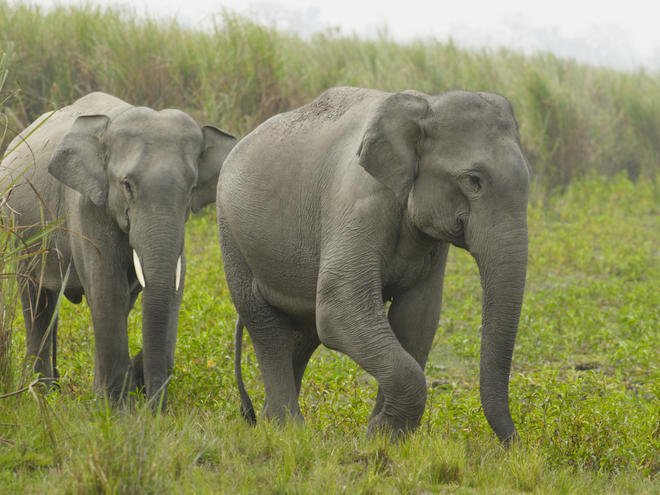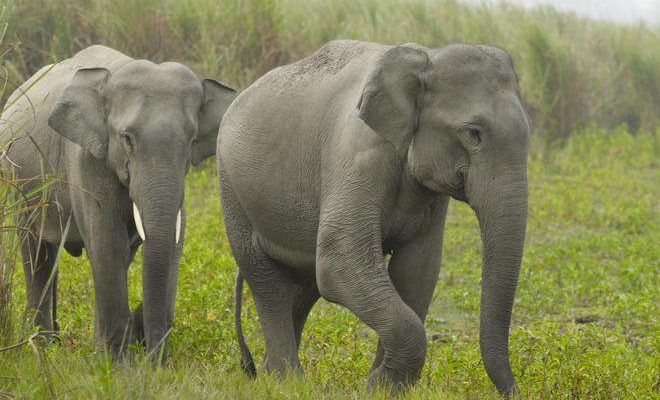
Now, before we dive deep into the intricacies of elephant parenting, let’s paint a picture of their family dynamics. Picture a close-knit group of elephants traveling through dense forests and grasslands. They’re not just passing time; they’re engaged in a constant cycle of education, protection, and support. Indian elephants, with their strong social structures, show us that parenting can be more than just a solo job—it can be a community affair.
The Family Structure of Indian Elephants
The first thing to understand about Indian elephants is their unique family structure. Unlike many animals that lead solitary lives, elephants are social beings. They usually live in groups called herds, which consist primarily of females and their young. Herds can range from five to thirty elephants, all united under the leadership of a matriarch—the oldest female.
You might be wondering how this matriarch plays a role in raising the young. Here’s the thing: she’s not just a leader but a teacher and protector. She leads the herd to food and water sources while also teaching the younger elephants about the environment around them. This includes everything from identifying edible plants to the best routes for migration. It’s a bit like having a wise grandmother who knows all the family secrets—essential for survival!
The Role of Male Elephants
While the females do most of the nurturing, male elephants have their own unique role in the social structure. Young males leave the herd when they reach adolescence, usually around the age of 10 to 15. Although they might not participate in parenting directly, their presence contributes to the overall well-being of the group. It’s essential for these young males to learn how to behave and interact appropriately, preparing them for their future roles in society.
Interestingly, adult males do return to the herds occasionally, especially during mating season, but their involvement in raising young is limited. Instead, they focus on gaining strength and social skills by interacting with other males.
How Calves Are Born
When it comes to the actual birthing process, Indian elephants follow a unique cycle. After a lengthy gestation period of about 22 months, which is nearly two years, a female elephant gives birth to a single calf. It’s one of the longest gestation periods in the animal kingdom! Just imagine the excitement and anticipation that builds up over those months!
As the calf arrives, it’s a moment of joy for the entire herd. Other females in the group—known as allomothers—come together to help care for the newborn. They’ll provide support by keeping watch and ensuring the little one gets the nutrition it needs from its mother. This communal care helps increase the calf’s chances of survival, showcasing the strength of their family bond.
Breastfeeding and Nutritional Needs
In the first few months, the calf relies completely on its mother’s milk. The milk is rich and provides all the necessary nutrients for the growing baby. Mothers typically nurse their calves about every 30 minutes, which is critical for the calves’ health.
As the calves grow, they start to explore solid food. They learn what to eat by watching their mothers and other adult elephants. This stage is essential, as it teaches them the importance of a diverse diet—like how to forage through the jungle for fruits, leaves, and bark. It’s kind of like learning to cook by watching your parent in the kitchen!
Social Learning Among Young Elephants
One of the most fascinating aspects of how Indian elephants raise their young is their method of social learning. Young elephants, especially calves, watch and mimic the adults in their herd. This form of learning is crucial because it helps them understand their environment and social dynamics.
For example, calves often observe how their mothers react to threats or how they communicate with others. They learn to use low-frequency sounds, also known as infrasound, to communicate over long distances. This way, they’re prepared for the challenges of their environment. Think of it like kids learning social cues from their friends and parents—these early lessons shape their future interactions.
Play and Exploration
Play is another vital part of child-rearing among Indian elephants. Young elephants engage in playful activities, such as chasing one another or splashing in waterholes. These moments of joy are not just fun; they also help develop important skills. Through play, calves learn how to use their trunks, understand spatial awareness, and build social bonds.
Just like young children who learn about life through playdates, elephant calves use these experiences to hone their skills for adult life. Their playful interactions also strengthen the bonds within the herd, ensuring a tightly-knit family unit.
Protection and Safety in the Herd
In the wild, safety is a top priority for a herd of elephants. When it comes to protecting their young, Indian elephants are incredibly vigilant. The matriarch leads the herd in choosing safe places to rest and forage, always keeping an eye out for potential threats, such as predators.
If danger approaches, such as a lion or a lurking poacher, the adults will form a protective circle around the young. They make loud trumpeting sounds to warn off intruders and to rally the group. This behavior is a prime example of how communal effort and teamwork are essential for a calf’s survival, emphasizing the importance of the herd in raising their young.
Challenges Faced by Young Elephants
Despite their strong social structures, young elephants face many challenges. Habitat loss due to human activities, poaching, and climate change can greatly affect their survival. These external pressures can make it hard for elephants to find food, water, and safe places to roam.
As a result, the nurturing and protective roles of their family units become even more critical. By staying connected and adapting to their changing environment, these elephants increase their chances of thriving in the wild.
The Lifelong Bonds of Elephants
The bond between Indian elephants and their young lasts a lifetime. Even after calves reach maturity, they often remain close to their family, sometimes even returning to help care for younger siblings. This lifelong connection highlights the emotional depth of elephants and their commitment to family.
In essence, Indian elephants showcase the beauty of parenting in the wild. It’s not just the act of raising young but an entire network of relationships that support and guide those calves as they grow into adults. The lessons learned and bonds formed during these early years shape their future as they navigate the world together.
As we reflect on how Indian elephants raise their young, we’re reminded of the importance of community and the strength of familial relationships. Just like in human families, the values shared, lessons taught, and love given create a foundation on which future generations stand.
So next time you hear a captivating story about elephants or see them on a documentary, remember the intricate ways they nurture and protect their young in the wild. Their legacy is a testament to the power of family and the beauty of nature.

